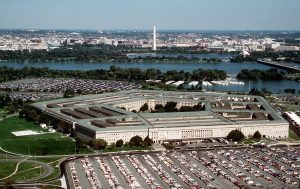Competitive dynamics between the United States and China are here to stay. Even if the Trump administration’s identification of Beijing as a “great power competitor” might not last a potential change in administrations after national elections later this year, greater friction between an increasingly ambitious Chinese government and the U.S. and its allies and partners will persist.
Amid growing mutual mistrust and heightening tensions in the Asia-Pacific — from the South China Sea to the East China Sea to the Korean Peninsula — defense planners in Washington are preparing for a range of contingencies.
One of the long-term concerns on the minds of American policymakers, particularly those thinking about defense, is maintaining a technological edge and qualitative leadership in a range of emerging technologies. Fortunately, American technological leadership — and foundations for future success — are strong.
The United States remains a hotbed for global innovation, but maintaining this edge will require careful thinking about how best to tap into a strong national industrial base, lest American technological and manufacturing advantages erode. Effectively competing in the years to come will require strong private-public partnerships, in particular.
Beginning in the Obama administration and especially under Secretary of Defense Ash Carter, the U.S. Department of Defense began to think carefully about how best to create the conditions for productive private-public partnerships. Tapping the flow of innovation out of Silicon Valley, for instance, became a major concern.
These efforts have been successful. Several of the United States’ largest and best-known technology firms have partnered with the federal government on the development of critical technologies with defense applications. But for smaller firms — and particularly smaller firms with little or no experience dealing with the byzantine world of defense procurement and acquisition — much work remains to be done.
Smaller firms look at the federal government and see a difficult-to-navigate, bureaucratic minefield. The existing array of laws and regulations governing procurement has grown far too burdensome, heightening the perceived barriers to entry. The prescription need not be a wholesale dismantlement of this red tape, but, at the least, let’s not erect additional obstacles.
Many smaller players who may be at the cutting edge of critical technologies might not see the relatively smaller-value government defense contracts as worth pursuing against the bureaucratic costs of doing so — particularly when uncertainties might lie ahead about pricing, renewal, and longevity.
The United States’ bottom-up well of innovation is markedly different from the state-backed “military-civil fusion” model favored by a country like China — and for good reasons. But one consequence of this distributed, free-enterprise system is that innovation can spring just as easily from smaller, less capitalized players as it can from the established giants.
If the U.S. Department of Defense is to tap into these firms, it should ensure that incentives for cooperation exist. In the world of tech, for instance, several firms already face cultural obstacles in interfacing with the “suits” that roam the halls of the Pentagon. Instead of deterring cooperation, the primary goal should be to pull talent and innovation toward defense applications.
At the same time that it works to attract new innovators to the defense innovation and industrial base, DoD should carefully consider adding regulations, imposing stricter cost and pricing requirements, or instituting more audit requirements on existing defense contractors, lest they choose to exit the defense marketplace for greener – and less bureaucratic – pastures.
Keeping up in whatever “technology races” might lie ahead as geopolitical competition intensifies with China and other competitors will require contending with these challenges. The foundations for robust and sustained American technology leadership are already in place. Additional regulatory burdens will only undermine the Defense Department’s ability to most efficiently yield the benefits of critical technologies.
The salience of technological competition is set to only increase as the 21st century goes on. Washington should position itself for success.
































